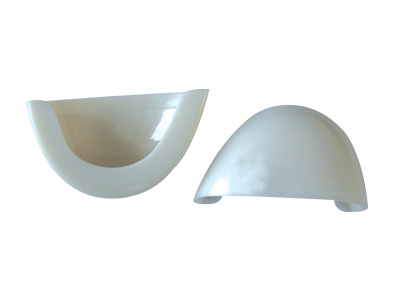Steel Toe VS. Composite Toe

Both steel toe boots and composite boots are designed to protect the feet. You may be wondering how you are supposed to choose between them. In order to make the best decision between purchasing steel toe boots and composite boots, you must first understand the difference between them.
Steel toe boots, as their name suggests, contain a piece of steel in the toe area of the boot for immense protection. Naturally, steel toe boots meet the ANSI safety requirements. After all, they are designated to protect the feet of electricians, construction workers, and other workers who function in a hazardous environment.
Unfortunately, some of these workers must regularly pass through security which may entail metal detectors. The metal within the steel toe boots can set off the metal detectors causing some annoyance and possibly wasting some time (if you have to be individually checked for instance). Therefore, if a worker does not have to pass through detectors, steel toe boots are an ideal choice.
Composite toe boots are lighter than steel toe boots and do not contain any form of metals in them. Instead, they contain a composite material in the toe portion of the boots. Composite materials include, but are not limited to, Kevlar, plastic, and carbon fiber. Composite toe boots also meet the ANSI safety requirements for shoes intended to provide the feet with added protection in comparison to boots without a safety toe.
However, composite toe boots are typically more suitable for people who have to pass through metal detectors, such as nuclear workers, security personnel, and airport workers. This is because composite boots do not set off metal detectors like steel toe boots because they are non-metallic.
There are two things you must know when shopping for either steel toe boots or composite toe boots: impact rating and compression rating.
The impact rating is a number that informs you of the amount of pounds of impact the shoes will protect against. For example, an I/75 impact rated pair of boots can withstand an impact of 75 pounds. The test done to determine the impact rating is done by dropping a weight from a certain height at a specified speed onto the boots. If the boots can withstand the 75 pound weight, they are labeled as I/75. The minimum impact rating for safety toe boots is I/50.
The compression rating is the number of loads the shoes can withstand before cracking or breaking. For example, a C/75 will guard against compressive loads of up to 2,500 pounds. A C/50 pair of boots can protect against compressive loads of up to 1,750 pounds.
In conclusion, when it comes to choosing between steel toe and composite toe boots, the major determining factor will be your job. Will you have to regularly walk through metal detectors? What dangers will you face on the job? How heavy is the equipment around you that could fall on your feet? What level of protection do you feel most comfortable with? Answering these questions can help you make the right decision.
Copyright © 2003 - 2023 KK
Most recent revision July 31, 2023 07:45:42 PM





